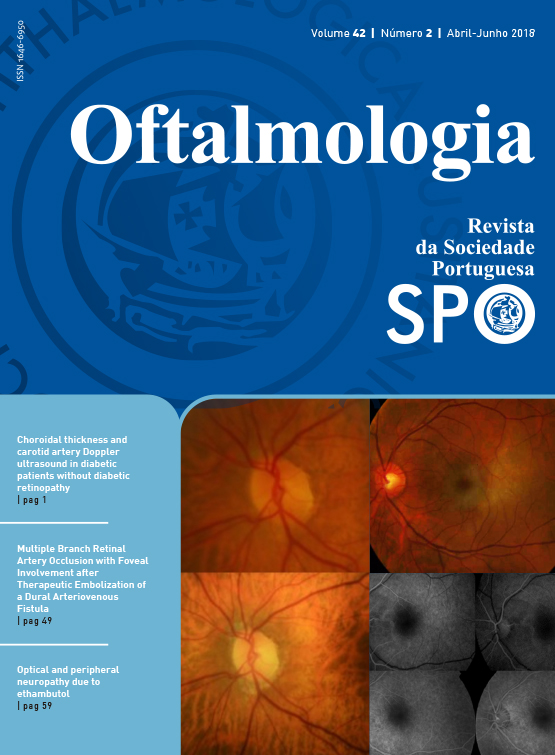SENSITIVITY OF PSYCHOPHYSICAL, ELECTROPHYSIOLOGICAL AND STRUCTURAL TESTS FOR DETECTION AND PROGRESSION MONITORING IN OCULAR HYPERTENSION AND GLAUCOMA
DOI:
https://doi.org/10.48560/rspo.13563Resumo
PURPOSE: To characterize early visual impairment of patients in the glaucoma spectrum, using psychophysical, electrophysiological and structural methods.
METHODS: Cohort of 52 patients, 18 patients with ocular hypertension (HT), 15 glaucoma suspects (GS) and 19 with primary open-angle glaucoma (G), and 20 age-matched controls. Quantitative psychophysical methods were used to assess magno (FDT, Frequency Doubling Technology), parvo and koniocellular pathways (Cambridge Color Test), and RGC function was assessed by Pattern Electroretinogram. RGC axonal thickness was obtained using OCT.
RESULTS: Reduced mean achromatic contrast sensitivity (p=0.0298) was found in patients with HT, as well as a reduced PERG N-95 wave amplitude (p=0.0499). Chromatic thresholds were significantly increased for protan, deutan and tritan axes (p<0.03) in these patients when compared to controls. At approximately 80% specificity, FDT showed only moderate sensitivity to detect early functional damage (superior nasal, 66% sensitivity). The pattern of disease progression decline is approximately linear for all tests, but more severe in OCT, RNFL thickness ( = 0.47).
CONCLUSION: We found relative damage of magno, parvo and koniocellular retinocortical pathways beginning in ocular hypertension. FDT and CCT Protan performed well in detecting early damage in ocular hypertension, whereas longitudinal analysis using OCT for RFNL appeared to be the best to monitor the progression. The sensitivity of currently available tests is lower comparing with our previously reported novel psychophysical tools (sensitivity above 90% for 80% specificity). We believe early diagnosis in glaucoma is possible by exploiting visual pathways with a small degree of redundancy through high sensitivity functional tests.
Downloads
Downloads
Publicado
Como Citar
Edição
Secção
Licença
Não se esqueça de fazer o download do ficheiro da Declaração de Responsabilidade Autoral e Autorização para Publicação e de Conflito de Interesses
O artigo apenas poderá ser submetido com esse dois documentos.
Para obter o ficheiro da Declaração de Responsabilidade Autoral, clique aqui
Para obter o ficheiro de Conflito de Interesses, clique aqui





